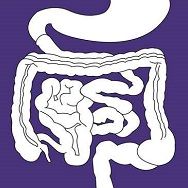FMT: Colonoscopy Outperforms Endoscopy
Reporting at the 2015 Digestive Disease Week conference in Washington, DC, a research team from Scott and White Memorial Hospital in Temple, Texas, found that colonoscopy has the edge over upper endoscopy in fecal microbiota transplant.

Though fecal microbiota transplant (FMT) has quickly caught on as a potentially effective treatment for recurring C. difficile infection, clinicians have no definitive guidance on how to best deliver the healthful microbes to patients.
Reporting at the 2015 Digestive Disease Week conference in Washington, DC, a research team from Scott and White Memorial Hospital in Temple, Texas, found that colonoscopy has the edge over upper endoscopy.
In an abstract presented May 18, Levi Hubble, MD, and colleagues looked at results in 31 cases where patients with recurring C. dif had FMT via colonoscopy into the cecum and the terminal ileum. Their initial cure rate was 83.8%. They compared that to results in 36 patients who had FMT via upper endoscopy into the distal duodenum or proximal jejunum. Their initial cure rate was 77.6%.
In repeat procedures for those not cured the first time, the results approached 100% cure rates with either method.
The patients got their infections either in the community or in an institutional setting. They were given either universal-donor fecal transplants or were allowed to select their own donor.
In all cases, the infection had to be confirmed by PCR testing before FMT was done. The patients all tried at least 2 courses of antibiotic therapy before getting FMT.
The researchers said they concluded both that FMT can be delivered in either an inpatient or outpatient setting and that while colonoscopy is more effective in getting a cure initially, “Repeat cure rate with FMT have cure rates approaching 100%.”